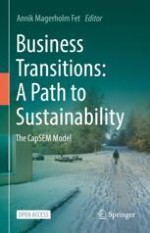6.1 Introduction
6.2 Environmental Labels and Declarations
-
Self-declaration (type II, ISO 14021)
-
Verifying content (type III, ISO 14025)
-
Certifying performance (type I, ISO 14024)
Type I | Type II | Type III | Hybrid approaches | |||
|---|---|---|---|---|---|---|
Footprint labels (ISO 14026) | Carbon footprint (ISO 14067) | Other hybrid approaches1 | ||||
Standard | ISO 14024 | ISO 14021 | ISO 14025 | ISO 14026 | ISO 14067 | Check |
Main audience | B2B and B2C | Depends on claim | Mainly B2B, B2C possible | B2B and B2C | For communication, ISO 14026 applies | Check |
Programme operator | Yes | No | Yes | (Yes)2 | Check | |
Life cycle perspective | Yes | (Yes)3 | Yes, LCA | Yes | Check | |
Environmental performance criteria | Multiple criteria | Self-imposed criteria, often single issue | No performance criteria | No (but rating scales may be used)4 | Check | |
Verification type | Yes, 3rd party | No, based on disclosure | Independent verification. 3rd party for B2C, programme decides for B2B | Independent verification. Programme decides for B2B and B2C | Check | |
6.2.1 Type I: Environmental Labels
6.2.2 Type II: Environmental Claims by Manufacturers
6.2.3 Type III: Environmental Declarations
6.3 Future Trends: Carbon Footprint of Products (CFP) and Other Hybrid Labels
6.4 Application
6.4.1 Choosing an Approach
-
Leading edge: the performance of the products is among the best and the organisation contributes to advancing the industry.
-
Commercial/ environmental excellence: the performance is among the best; the environment is used to gain competitive advantage.
-
Compliance plus: performance is above minimum requirements but not good enough to obtain a type I ecolabel.
-
Compliance: performance meets minimum legal requirements, but there are no defined targets to improve beyond this.
-
Non-compliance: the organisation knowingly breaks laws and regulations to gain competitive advantage, e.g. through greenwashing.
6.5 Creating an EPD
6.6 Conclusion
-
Level 1. Processes: Labels and declarations can contribute to identifying the most significant processes in an environmental perspective, both within the organisation and in the value chain.
-
Level 2. Product system: Labels and declarations can contribute to product design and supply chain management.
-
Level 3. Organisation: Labels and declarations can contribute to obtaining and maintaining a license to operate, and to gain competitive advantage
-
Level 4. Larger systems, such as the society: Labels and declarations can contribute to changes in consumers’ behaviour by informing selections on climate footprint of their consumptions.
